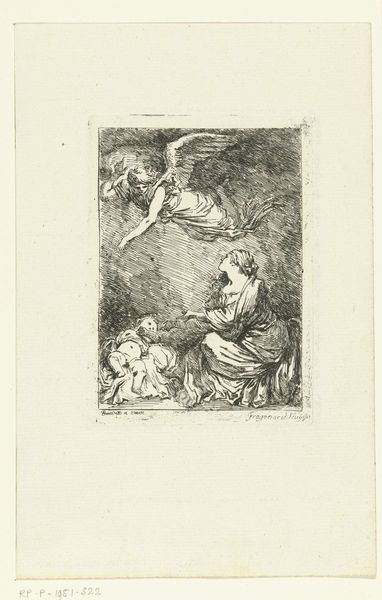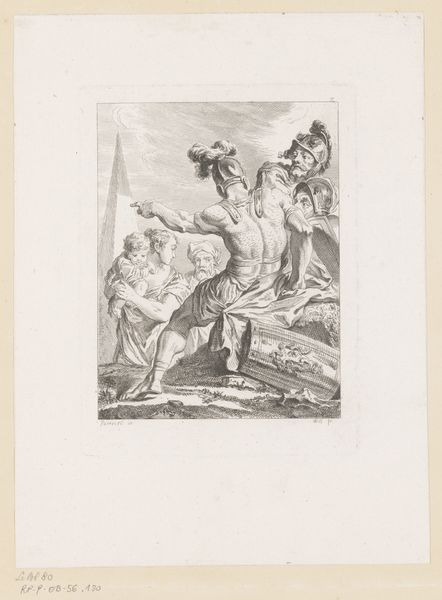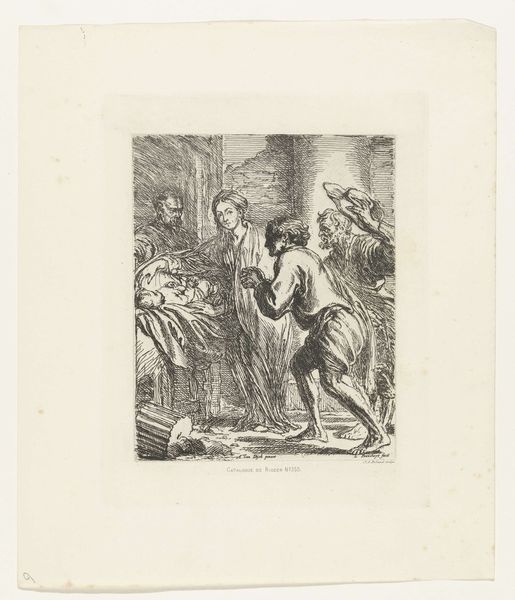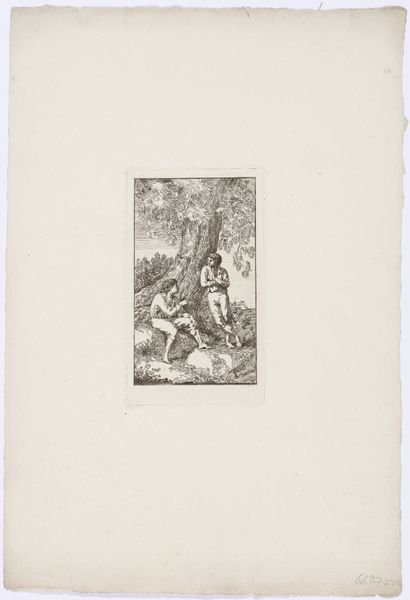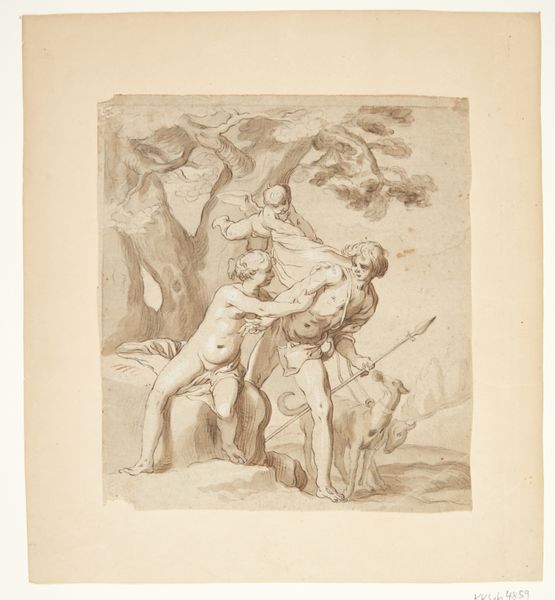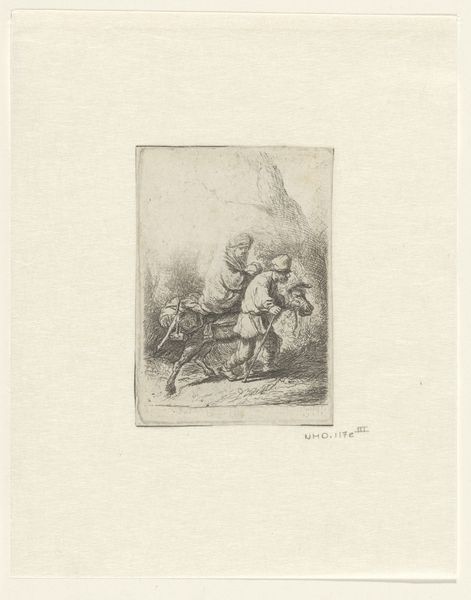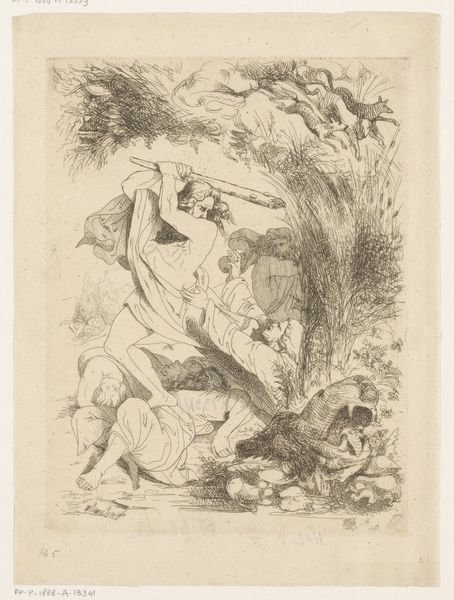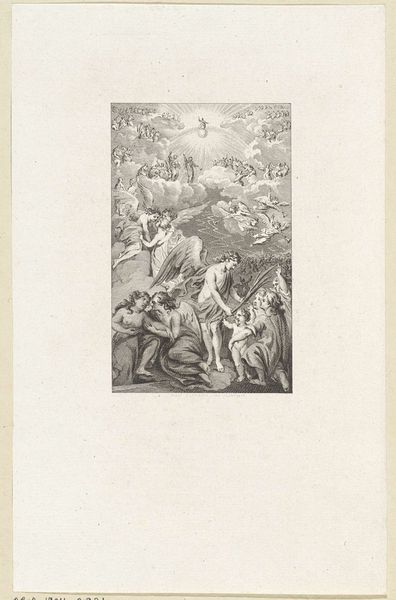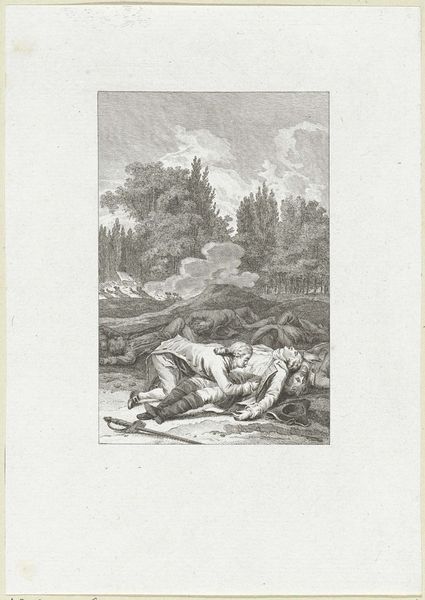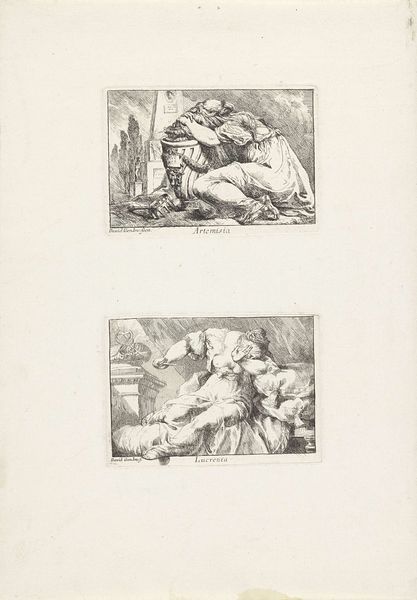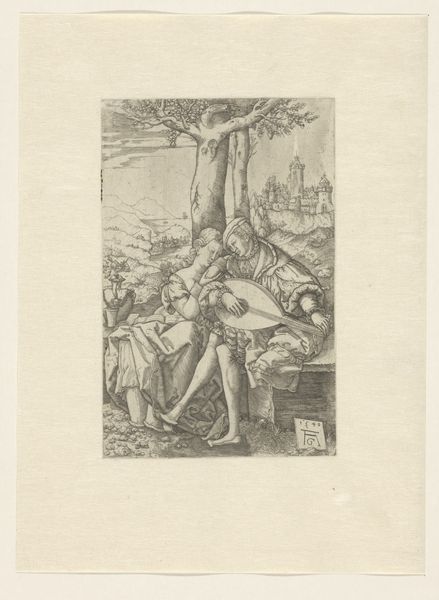
Dimensions: height 253 mm, width 162 mm
Copyright: Rijks Museum: Open Domain
Editor: Here we have "Oordeel van Paris," or "Judgement of Paris," a print, possibly from 1865, by C.A. Tuchs. It depicts two nude male figures in what looks like a classical landscape. I'm immediately drawn to the tension in the seated figure's face as he's holding an apple. How do you interpret this work in terms of its social context? Curator: Well, it's crucial to understand the mythology being depicted. Paris's judgment—choosing Aphrodite as the fairest goddess and awarding her the golden apple—wasn’t merely a beauty contest. It set in motion the events leading to the Trojan War. Considering that, what does it say about power, beauty, and masculine agency in the mid-19th century? Is this image reflecting or critiquing those notions? Editor: That's a great point. The story feels almost like a cautionary tale about unchecked desires and their catastrophic consequences. So, considering this print was possibly made in 1865, how do you think the audience at the time would perceive the depiction of these classical figures, especially in the context of burgeoning modernity? Curator: The late 19th century was a time of intense societal shifts, where the artistic establishment frequently looked back to classical antiquity for standards of beauty and order. But that very act could also be a subtle critique of the present, reflecting on lost ideals or perhaps questioning the power dynamics that defined their world. What strikes you about the technical aspects of the print itself, in relation to its themes? Editor: The crisp lines of the engraving, and the detailed rendering of the bodies… there's a starkness that feels almost…judgmental. But if this "judgment" stems from a male gaze…it presents, to me, the power structures and patriarchal foundations inherent within classical art and myth, don't you agree? Curator: Absolutely! And that's precisely where we can connect the historical context to contemporary conversations about gender and power. We must interrogate the visual language and its implications on how these narratives continue to shape our understanding of beauty, power, and desire. Editor: I see, so the artwork invites a deeper exploration of power dynamics between the divine and mortals, gender, and desire, especially when viewed through today's societal awareness. Thank you. Curator: Indeed, by engaging with this print, we begin to dismantle assumptions and unveil the complex layers of meaning that resonate across time.
Comments
No comments
Be the first to comment and join the conversation on the ultimate creative platform.
